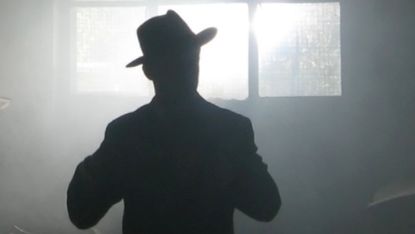

Who or what is the Hat Man?
It is not a new phenomenon. For about as long as written records have existed, “people have described a frightening night-time vision that paralyses them with fear and seems to suck the breath right out of them, often by pressing directly upon their chest”, reported Quartz.
The “shape of the frightening figure occasionally varies”, but victims usually report feeling “utterly paralyzed with terror, and breathless, as if fear had frozen them from the inside out”, said the site.
The “strange vision” is “remarkably consistent from one account to the next”, added Rolling Stone. “It’s the tall silhouette of a man in a brimmed hat, a presence that tends to appear when you’re in bed at night, somewhere between sleep and consciousness.”
Of course, said the magazine, as more people talk about Hat Man online, the more power the myth obtains and the image becomes self-perpetuating as those “consuming it automatically become disposed to recognize the Hat Man in their own bedrooms”.
What is sleep paralysis?
One in five people have an episode of paralysis at least occasionally, according to the Seattle-based Sleep Foundation, and accompanying hallucinations are very common.
Sleep paralysis blurs the line between sleep and wakefulness, so a person starts to become aware of their surroundings but is still in a state of temporary paralysis called muscle atonia, which the body goes into during rapid eye movement (REM) sleep to protect us from acting out our dreams.
While the exact cause of hallucinations like the Hat Man are unknown, experts believe they “occur when people experience the vivid dreams of REM sleep while they are awake”, said the foundation.
Some say the idea of the Hat Man may be subconscious reworkings of figures from popular culture, including popular horror films in recent times. Christopher French, a psychology professor at Goldsmiths, University of London, said the first thing that came to mind when he thought about the Hat Man was Freddy Krueger from “A Nightmare on Elm Street”. He told Quartz: “This notion that you can be attacked when you’re asleep, that’s when you’re vulnerable. And of course, Krueger wears a hat.”
Writing in the Scientific American, Baland Jalal suggested that people who fear supernatural demons in the night are more likely to experience the phenomenon again. “For centuries, cultures across the world have attributed these hallucinations to black magic, mythical monsters, even paranormal activity,” said Jalal, a researcher at Harvard University’s department of psychology.
After comparing how different cultures explain and experience sleep paralysis, he said “it appears that the more people fear sleep paralysis, the more they experience it, and the stronger its effects are”. Accompanied by a belief in the paranormal, sleep paralysis can therefore be not just frightening but potentially traumatising.
“The human mind is vastly more mysterious, and occasionally malevolent, than one would have thought.”